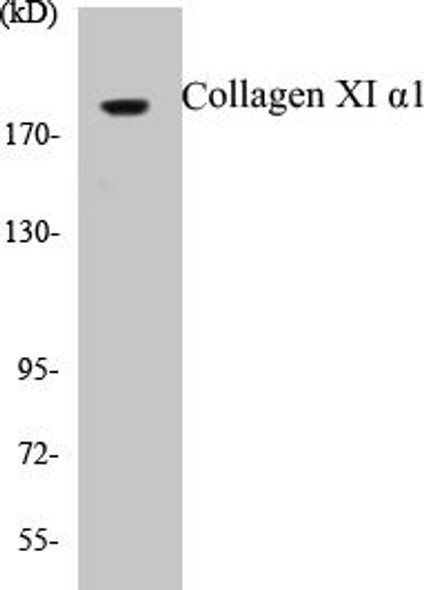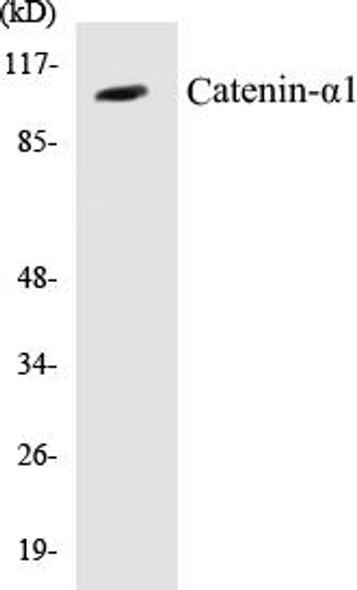Description
Collagen V alpha1 Colorimetric Cell-Based ELISA Kit
The Collagen V Alpha1 Colorimetric Cell-Based ELISA Kit is a cutting-edge tool for researchers looking to accurately measure levels of Collagen V Alpha1 in cell culture supernatants. This kit offers exceptional sensitivity and specificity, guaranteeing precise and consistent results for a variety of research applications.Collagen V Alpha1 is a vital component of the extracellular matrix and plays a crucial role in tissue structure and function. Dysregulation of Collagen V Alpha1 has been implicated in various diseases, including fibrosis, cancer, and autoimmune disorders.
By accurately quantifying Collagen V Alpha1 levels, researchers can gain valuable insights into disease mechanisms and potentially identify new therapeutic targets.The Collagen V Alpha1 Colorimetric Cell-Based ELISA Kit is a reliable and user-friendly solution for studying the role of Collagen V Alpha1 in health and disease. With its high performance and ease of use, this kit is an essential tool for advancing research in the field of extracellular matrix biology.
| Product Name: | Collagen V alpha1 Colorimetric Cell-Based ELISA |
| Product Code: | CBCAB00593 |
| ELISA Type: | Cell-Based |
| Target: | Collagen V alpha1 |
| Reactivity: | Human |
| Dynamic Range: | > 5000 Cells |
| Detection Method: | Colorimetric 450 nmStorage/Stability:4°C/6 Months |
| Format: | 96-Well Microplate |
The Collagen V alpha1 Colorimetric Cell-Based ELISA Kit is a convenient, lysate-free, high throughput and sensitive assay kit that can detect Collagen V alpha1 protein expression profile in cells. The kit can be used for measuring the relative amounts of Collagen V alpha1 in cultured cells as well as screening for the effects that various treatments, inhibitors (ie siRNA or chemicals), or activators have on Collagen V alpha1.
Qualitative determination of Collagen V alpha1 concentration is achieved by an indirect ELISA format. In essence, Collagen V alpha1 is captured by Collagen V alpha1-specific primary antibodies while the HRP-conjugated secondary antibodies bind the Fc region of the primary antibody. Through this binding, the HRP enzyme conjugated to the secondary antibody can catalyze a colorimetric reaction upon substrate addition. Due to the qualitative nature of the Cell-Based ELISA, multiple normalization methods are needed:
| 1. | A monoclonal antibody specific for human GAPDH is included to serve as an internal positive control in normalizing the target absorbance values. |
| 2. | Following the colorimetric measurement of HRP activity via substrate addition, the Crystal Violet whole-cell staining method may be used to determine cell density. After staining, the results can be analysed by normalizing the absorbance values to cell amounts, by which the plating difference can be adjusted. |
| Database Information: | Gene ID: 1289, UniProt ID: P20908, OMIM: 120215, Unigene: Hs.210283 |
| Gene Symbol: | COL5A1 |
| Sub Type: | None |
| UniProt Protein Function: | COL5A1: Type V collagen is a member of group I collagen (fibrillar forming collagen). It is a minor connective tissue component of nearly ubiquitous distribution. Type V collagen binds to DNA, heparan sulfate, thrombospondin, heparin, and insulin. Defects in COL5A1 are a cause of Ehlers-Danlos syndrome type 1 (EDS1); also known as Ehlers-Danlos syndrome gravis or severe classic type Ehlers-Danlos syndrome. EDS is a connective tissue disorder characterized by hyperextensible skin, atrophic cutaneous scars due to tissue fragility and joint hyperlaxity. EDS1 is the severe form of classic Ehlers-Danlos syndrome. Defects in COL5A1 are a cause of Ehlers-Danlos syndrome type 2 (EDS2); also known as Ehlers-Danlos syndrome mitis or mild classic type Ehlers Danlos syndrome. Belongs to the fibrillar collagen family. |
| UniProt Protein Details: | Protein type:Motility/polarity/chemotaxis; Secreted; Cell adhesion; Secreted, signal peptide; Extracellular matrix Chromosomal Location of Human Ortholog: 9q34.2-q34.3 Cellular Component: extracellular matrix; collagen type V; endoplasmic reticulum lumen; extracellular region; basement membrane Molecular Function:heparin binding; integrin binding; proteoglycan binding; platelet-derived growth factor binding; extracellular matrix structural constituent; metal ion binding Biological Process: skin development; heart morphogenesis; blood vessel development; axon guidance; extracellular matrix organization and biogenesis; cell migration; collagen fibril organization; extracellular matrix disassembly; collagen catabolic process; integrin biosynthetic process; regulation of cellular component organization and biogenesis; fibril organization and biogenesis; cell adhesion; collagen biosynthetic process; eye morphogenesis; wound healing, spreading of epidermal cells Disease: Ehlers-danlos Syndrome, Type I |
| NCBI Summary: | This gene encodes an alpha chain for one of the low abundance fibrillar collagens. Fibrillar collagen molecules are trimers that can be composed of one or more types of alpha chains. Type V collagen is found in tissues containing type I collagen and appears to regulate the assembly of heterotypic fibers composed of both type I and type V collagen. This gene product is closely related to type XI collagen and it is possible that the collagen chains of types V and XI constitute a single collagen type with tissue-specific chain combinations. The encoded procollagen protein occurs commonly as the heterotrimer pro-alpha1(V)-pro-alpha1(V)-pro-alpha2(V). Mutations in this gene are associated with Ehlers-Danlos syndrome, types I and II. Alternative splicing of this gene results in multiple transcript variants. [provided by RefSeq, May 2013] |
| UniProt Code: | P20908 |
| NCBI GenInfo Identifier: | 89276751 |
| NCBI Gene ID: | 1289 |
| NCBI Accession: | NP_000084.3 |
| UniProt Secondary Accession: | P20908,Q15094, Q5SUX4, |
| UniProt Related Accession: | P20908 |
| Molecular Weight: | 183,560 Da |
| NCBI Full Name: | collagen alpha-1(V) chain isoform 1 preproprotein |
| NCBI Synonym Full Names: | collagen, type V, alpha 1 |
| NCBI Official Symbol: | COL5A1 |
| NCBI Protein Information: | collagen alpha-1(V) chain; collagen alpha-1(V) chain |
| UniProt Protein Name: | Collagen alpha-1(V) chain |
| Protein Family: | Collagen |
| UniProt Gene Name: | COL5A1 |
| UniProt Entry Name: | CO5A1_HUMAN |
| Component | Quantity |
| 96-Well Cell Culture Clear-Bottom Microplate | 2 plates |
| 10X TBS | 24 mL |
| Quenching Buffer | 24 mL |
| Blocking Buffer | 50 mL |
| 15X Wash Buffer | 50 mL |
| Primary Antibody Diluent | 12 mL |
| 100x Anti-Phospho Target Antibody | 60 µL |
| 100x Anti-Target Antibody | 60 µL |
| Anti-GAPDH Antibody | 60 µL |
| HRP-Conjugated Anti-Rabbit IgG Antibody | 12 mL |
| HRP-Conjugated Anti-Mouse IgG Antibody | 12 mL |
| SDS Solution | 12 mL |
| Stop Solution | 24 mL |
| Ready-to-Use Substrate | 12 mL |
| Crystal Violet Solution | 12 mL |
| Adhesive Plate Seals | 2 seals |
The following materials and/or equipment are NOT provided in this kit but are necessary to successfully conduct the experiment:
- Microplate reader able to measure absorbance at 450 nm and/or 595 nm for Crystal Violet Cell Staining (Optional)
- Micropipettes with capability of measuring volumes ranging from 1 µL to 1 ml
- 37% formaldehyde (Sigma Cat# F-8775) or formaldehyde from other sources
- Squirt bottle, manifold dispenser, multichannel pipette reservoir or automated microplate washer
- Graph paper or computer software capable of generating or displaying logarithmic functions
- Absorbent papers or vacuum aspirator
- Test tubes or microfuge tubes capable of storing ≥1 ml
- Poly-L-Lysine (Sigma Cat# P4832 for suspension cells)
- Orbital shaker (optional)
- Deionized or sterile water
*Note: Protocols are specific to each batch/lot. For the correct instructions please follow the protocol included in your kit.
| Step | Procedure |
| 1. | Seed 200 µL of 20,000 adherent cells in culture medium in each well of a 96-well plate. The plates included in the kit are sterile and treated for cell culture. For suspension cells and loosely attached cells, coat the plates with 100 µL of 10 µg/ml Poly-L-Lysine (not included) to each well of a 96-well plate for 30 minutes at 37°C prior to adding cells. |
| 2. | Incubate the cells for overnight at 37°C, 5% CO2. |
| 3. | Treat the cells as desired. |
| 4. | Remove the cell culture medium and rinse with 200 µL of 1x TBS, twice. |
| 5. | Fix the cells by incubating with 100 µL of Fixing Solution for 20 minutes at room temperature. The 4% formaldehyde is used for adherent cells and 8% formaldehyde is used for suspension cells and loosely attached cells. |
| 6. | Remove the Fixing Solution and wash the plate 3 times with 200 µL 1x Wash Buffer for five minutes each time with gentle shaking on the orbital shaker. The plate can be stored at 4°C for a week. |
| 7. | Add 100 µL of Quenching Buffer and incubate for 20 minutes at room temperature. |
| 8. | Wash the plate 3 times with 1x Wash Buffer for 5 minutes each time. |
| 9. | Add 200 µL of Blocking Buffer and incubate for 1 hour at room temperature. |
| 10. | Wash 3 times with 200 µL of 1x Wash Buffer for 5 minutes each time. |
| 11. | Add 50 µL of 1x primary antibodies (Anti-Collagen V alpha1 Antibody and/or Anti-GAPDH Antibody) to the corresponding wells, cover with Parafilm and incubate for 16 hours (overnight) at 4°C. If the target expression is known to be high, incubate for 2 hours at room temperature. |
| 12. | Wash 3 times with 200 µL of 1x Wash Buffer for 5 minutes each time. |
| 13. | Add 50 µL of 1x secondary antibodies (HRP-Conjugated AntiRabbit IgG Antibody or HRP-Conjugated Anti-Mouse IgG Antibody) to corresponding wells and incubate for 1.5 hours at room temperature. |
| 14. | Wash 3 times with 200 µL of 1x Wash Buffer for 5 minutes each time. |
| 15. | Add 50 µL of Ready-to-Use Substrate to each well and incubate for 30 minutes at room temperature in the dark. |
| 16. | Add 50 µL of Stop Solution to each well and read OD at 450 nm immediately using the microplate reader. |
(Additional Crystal Violet staining may be performed if desired – details of this may be found in the kit technical manual.)






